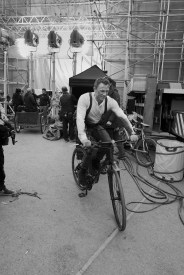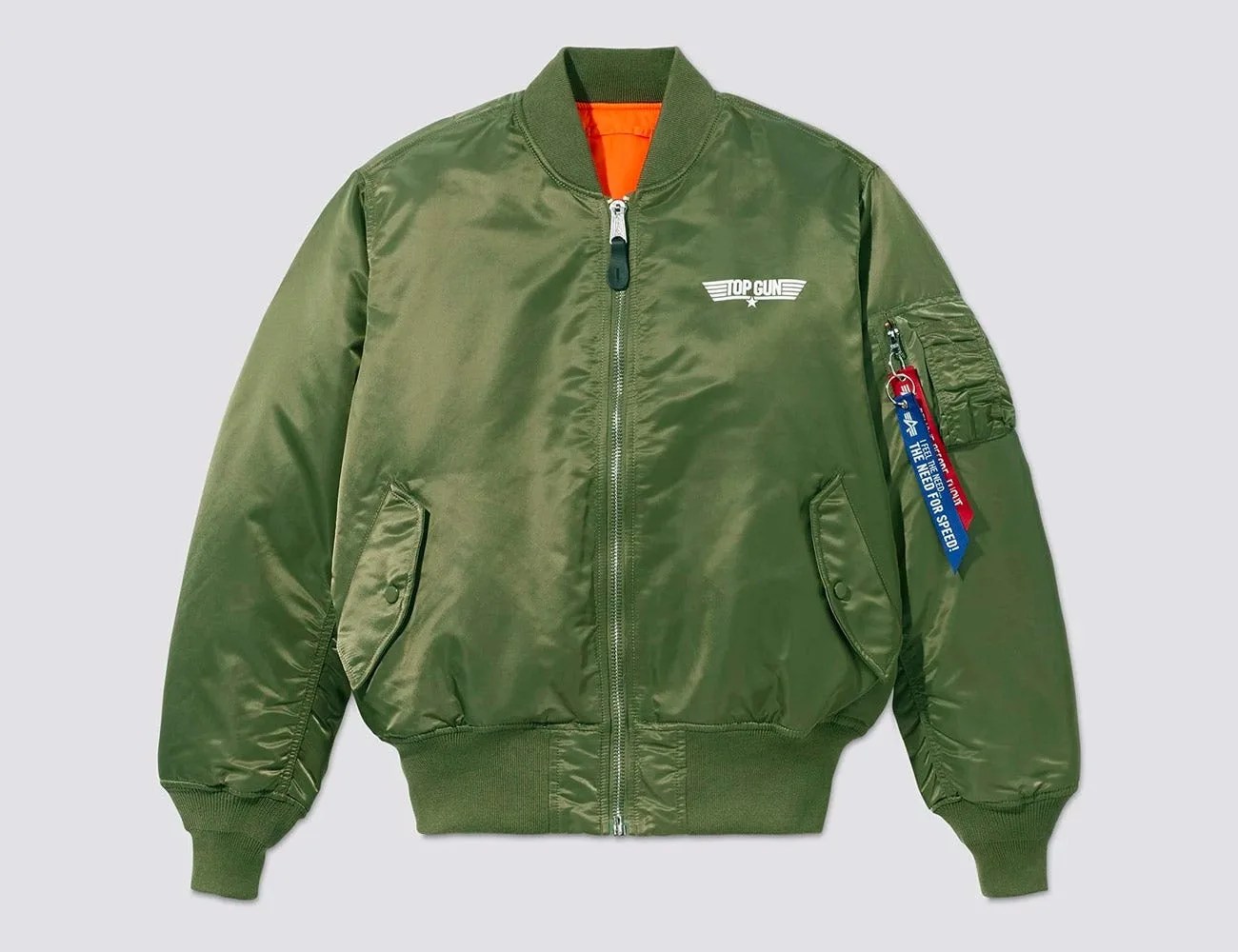In the original Top Gun, which was released in 1986, Lt. Pete “Maverick” Mitchell (played, of course, by Tom Cruise) wears a leather G-1 Jacket — an item that has been an option for fighter pilots since 1940. Back in ’40, though, it was called the M-422A. It wasn’t the G-1 Jacket until 1947, when it was standardized across the United States Navy, Marine Corps and Coast Guard.
What about the U.S. Air Force, you might ask? Well, they wear nylon bomber jackets — like this one from Alpha Industries.
However, the film’s profound popularity forced the Air Force’s hand. It was reinstated for service members in 1988. But this jacket’s return wasn’t the only byproduct of the original film; recruitment numbers also spiked by more than 500 percent, as David Robb wrote in his 2004 book Operation Hollywood: How the Pentagon Shapes and Censors the Movies. The Navy even stationed recruiting booths inside theaters in an attempt to capitalize on on folks’ post-flick thrills.
Of course, the Navy also lent planes and aircraft carriers to the filmmakers, and made uniform references available to costume teams, too. But the Navy also dictated how it’d be portrayed. Scenes were cut and plot lines were altered the Navy’s request, reports revealed, because the Navy was arguably the film’s biggest backer. (Did you know there are offices in Los Angeles for each branch of the armed forces to negotiate their cooperation in movies wherein the military is portrayed or heavily featured?)
The same can be said of the sequel, Top Gun: Maverick, which arrives in theaters on May 24th. But experts don’t think it’ll have the same effect on its audience.
“During a time of peace, a movie glamorizing war drove recruitment through the roof. Unfortunately, in a time of war, movies glamorizing war don’t work as well. You can count the number of true war movies this year with one hand,” Carl Forsling, a senior columnist for Task & Purpose and a retired Marine MV-22B pilot and former CH-46E pilot, wrote for Business Insider in 2020 — two years before the war in Ukraine dominated Americans’ everyday life.







